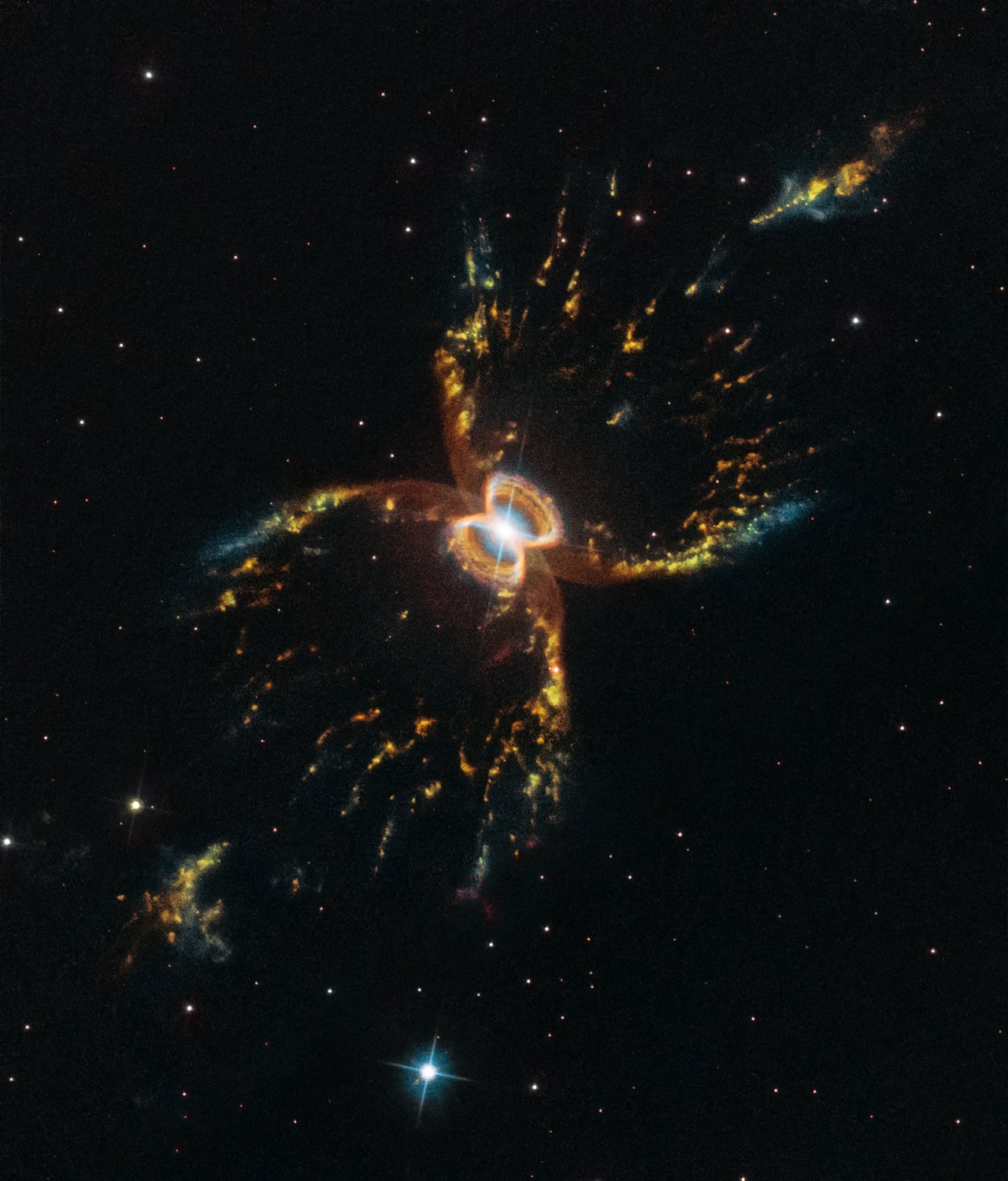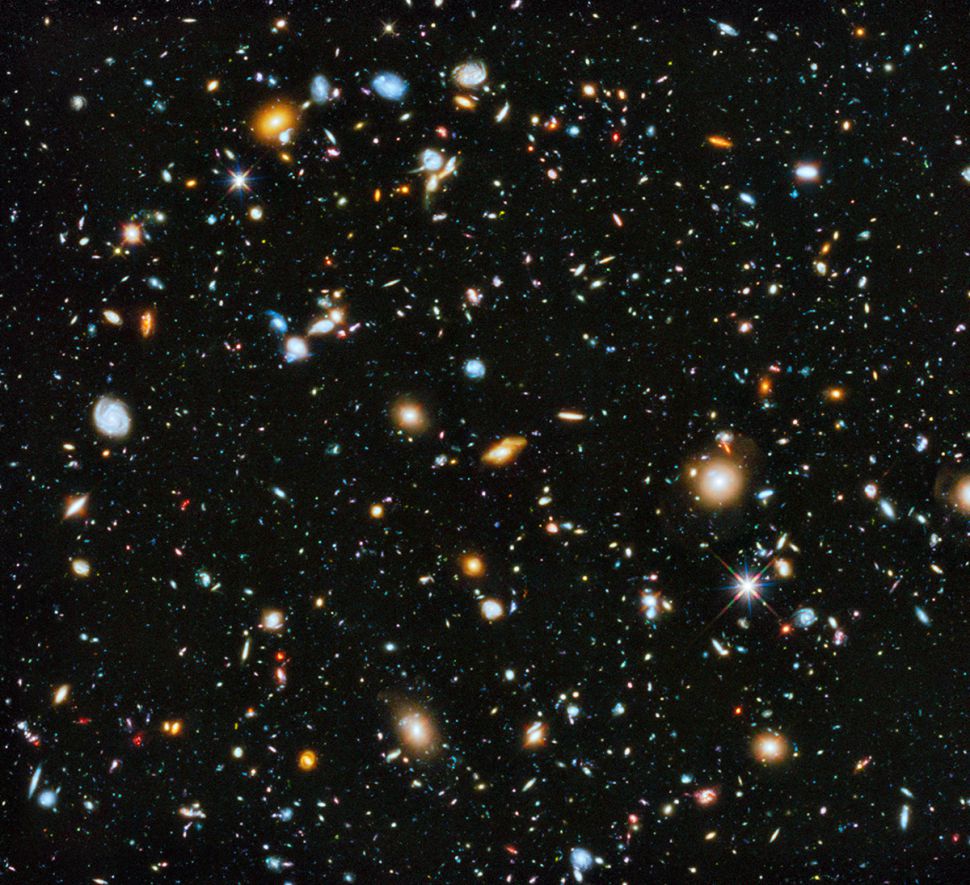Cosmic Crustacean Makes Great Birthday Card for Hubble's 29th Year (Image)
And many more!

Hubble Space Telescope team members are celebrating the last birthday in the mission's 20s. In honor of that milestone, on Thursday (April 18), the team released a Hubble image featuring the hourglass-shaped Southern Crab Nebula.
Not to be confused with the Crab Nebula found in the constellation Taurus, the Southern Crab Nebula is the beautifully symmetrical structure created by an uneven binary star system, according to the image's description. In that system, one star has already exploded and turned into a white dwarf.
The other star isn't dead yet. It's a red giant and also reaching the end of its life, shedding its outer layers. The white dwarf's gravity draws in some of this material cast off by its companion, only to eject it again into space. This interaction creates the mesmerizing shapes of the Southern Crab Nebula.
Related: What Is the Eagle Nebula?

To some, the clouds of dust resemble a crab. But depending on the pareidolia perspective of the viewer, in which they see a certain pattern or image when looking at something abstract, the material might also resemble a moth or a haute couture dress.
The European Space Agency, which partners with NASA on the Hubble mission, released this picture in anticipation of Hubble's 29th birthday. The iconic spacecraft ascended to space aboard the space shuttle Discovery on April 24, 1990.
The then $1.5 billion project became more costly right after launching: Researchers found that the telescope's mirror was flawed and produced fuzzy images. Three years later, in December 1993, the space shuttle Endeavour brought a crew to perform five spacewalks to do repair work and install two more cameras. One of these was the Wide Field and Planetary Camera 2, which captured two of Hubble's most famous photos: the pillars of the Eagle Nebula and the Hubble Deep Field.
Get the Space.com Newsletter
Breaking space news, the latest updates on rocket launches, skywatching events and more!
This space telescope, named after U.S. astronomer Edwin Hubble, is expected to run at least another five years, according to a January 2019 engineering report.
- Most Amazing Hubble Space Telescope Discoveries
- Celestial Photos: Hubble Space Telescope's Latest Cosmic Views
- Lagoon Nebula Dazzles in Hubble Telescope's 28th-Birthday Photos
Follow Doris Elin Salazar on Twitter @salazar_elin. Follow us on Twitter @Spacedotcom and on Facebook.
Join our Space Forums to keep talking space on the latest missions, night sky and more! And if you have a news tip, correction or comment, let us know at: community@space.com.

Doris is a science journalist and Space.com contributor. She received a B.A. in Sociology and Communications at Fordham University in New York City. Her first work was published in collaboration with London Mining Network, where her love of science writing was born. Her passion for astronomy started as a kid when she helped her sister build a model solar system in the Bronx. She got her first shot at astronomy writing as a Space.com editorial intern and continues to write about all things cosmic for the website. Doris has also written about microscopic plant life for Scientific American’s website and about whale calls for their print magazine. She has also written about ancient humans for Inverse, with stories ranging from how to recreate Pompeii’s cuisine to how to map the Polynesian expansion through genomics. She currently shares her home with two rabbits. Follow her on twitter at @salazar_elin.









